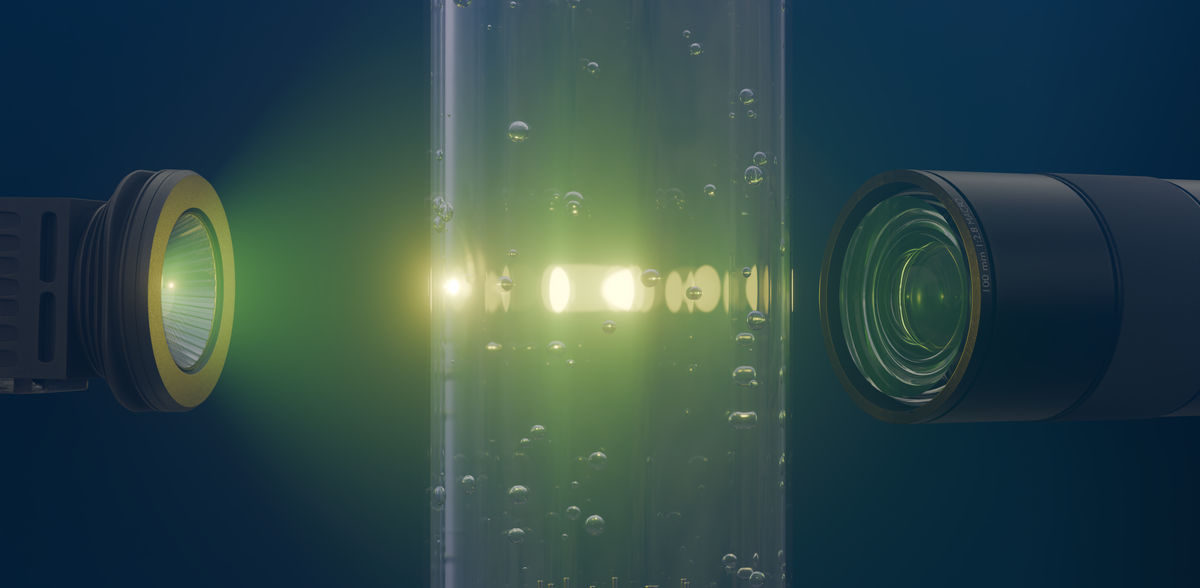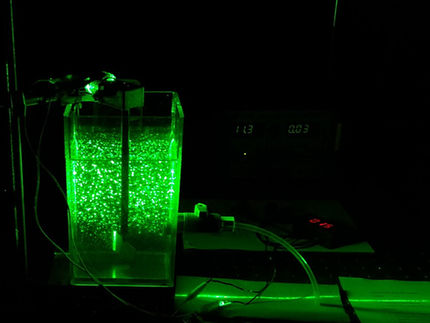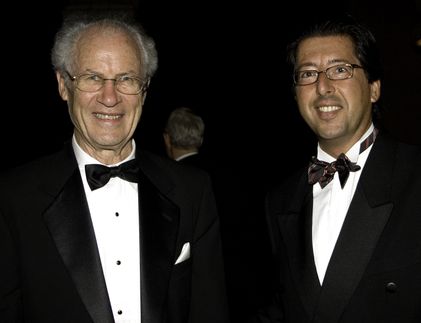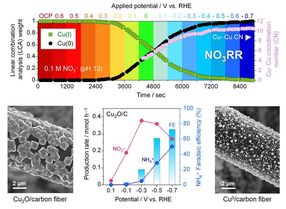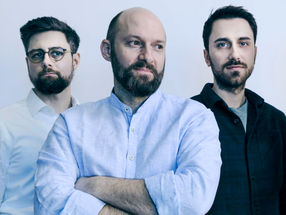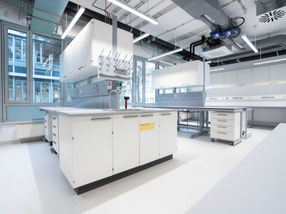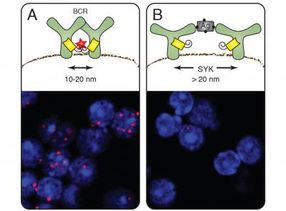Elegant theory explains the chaos of rising gas bubbles
Researchers find classical turbulence in dynamic gas formations
Advertisement
An international research team from the Helmholtz-Zentrum Dresden-Rossendorf (HZDR), Johns Hopkins University and Duke University has discovered that a century-old theory describing turbulence in liquids also applies to a very bubbly problem: namely, how exactly rising bubbles swirl up the water around them. The experiments, in which the researchers tracked individual bubbles and liquid particles in 3D, provide the first direct experimental evidence that so-called "Kolmogorov scaling" can occur in bubble-induced turbulence
Bubble-induced turbulence occurs in many places: from carbonated beverages to industrial mixing processes to the roaring surf of the sea. When enough bubbles rise through a liquid, their wake sets the surrounding fluid into a complex, turbulent motion. Understanding the rules behind this chaos is crucial to improving industrial designs and climate models. However, one key question has long puzzled researchers: can the mathematical theory of turbulence developed by Russian mathematician Andrei Kolmogorov in 1941 - known as "K41 scaling" - be applied to flows in which bubbles drive the motion? Until now, the answer was unclear due to contradictory results from experiments and computer simulations.
"We wanted to get a definitive answer by closely examining the turbulence between and around the bubbles on very small scales," says Dr. Tian Ma, lead author of the study and physicist at the Institute of Fluid Dynamics at the HZDR. To achieve this, the researchers used an advanced 3D Lagrangian tracking method of both phases - a technique that allows both the bubbles and tiny marker particles in the surrounding fluid to be tracked in real time and with high precision. The experimental setup comprised an 11.5 cm wide water column into which a large number of gas bubbles were introduced from below in a controlled manner. Four high-speed cameras recorded the events at 2500 frames per second.
The researchers investigated four different cases, varying the bubble size and gas volume to simulate realistic bubble flows. The decisive factor was that the bubbles, with a diameter of three to five millimetres, were large enough to enter into irregular oscillations as they rose, generating strong turbulent wake flows. In two of the four cases - those with moderate bubble size and density - the turbulence in the flow closely matched Kolmogorov's predictions on a small scale, that is, for vortices smaller than the bubbles. This is the first time that such scaling has been experimentally confirmed in the middle of a bubble swarm.
Deciphering turbulence: energy cascades from large to small
"Kolmogorov's theory is elegant. It describes how energy transitions from large turbulent eddies to smaller and smaller ones, where it is eventually lost through frictional effects - and how this process controls the fluctuations of turbulent flow motion," explains co-author Dr. Andrew Bragg from Duke University. "The realization that this theory also describes bubble-driven turbulence so well is both surprising and exciting."
The team also developed a new mathematical formula to estimate the rate at which turbulence loses energy due to viscous effects, known as the energy dissipation rate. Their formula, which depends on only two bubble-related parameters - their size and the density of the bubbles - agreed remarkably well with the experimental data. Interestingly, they found that Kolmogorov scaling was stronger in regions outside the direct wake of the bubbles. In these wake regions, the fluid is so strongly disturbed that the classical turbulent energy cascade is masked or dominated by the strong disturbances.
A key finding is that for Kolmogorov's classical "inertial range" - where his scaling laws work best - much larger bubbles would be required for this range to be clearly recognizable in bubble-induced turbulence. But there's a catch: in reality, bubbles of this size would burst due to their own instability. This means that there is a fundamental limit to how well the K41 theory can be applied to bubble-containing flows. "In some ways, nature prevents us from achieving perfect Kolmogorov turbulence with bubbles. But under the right conditions, we now know that it approaches it," explains Dr. Hendrik Hessenkemper, co-author of the study who conducted the experiments.
The results not only settle an ongoing scientific debate, but could also help engineering to better design bubble-based systems, from chemical reactors to wastewater treatment. And on the physics side, it adds another system to the growing list of chaotic phenomena where Kolmogorov's 1941 theory proves surprisingly robust: bubble flows.
The team emphasizes that the study is just the beginning. Future work could address the question of how turbulence behaves in even more complex bubble shapes, bubble mixtures or under other gravity or fluid conditions. "The better we understand the basic rules of turbulence in bubble flows, the better we can use them in real applications," summarizes Ma. "And it's pretty amazing that a theory that was put forward over 80 years ago still holds up in such a bubbly environment."
Note: This article has been translated using a computer system without human intervention. LUMITOS offers these automatic translations to present a wider range of current news. Since this article has been translated with automatic translation, it is possible that it contains errors in vocabulary, syntax or grammar. The original article in German can be found here.
